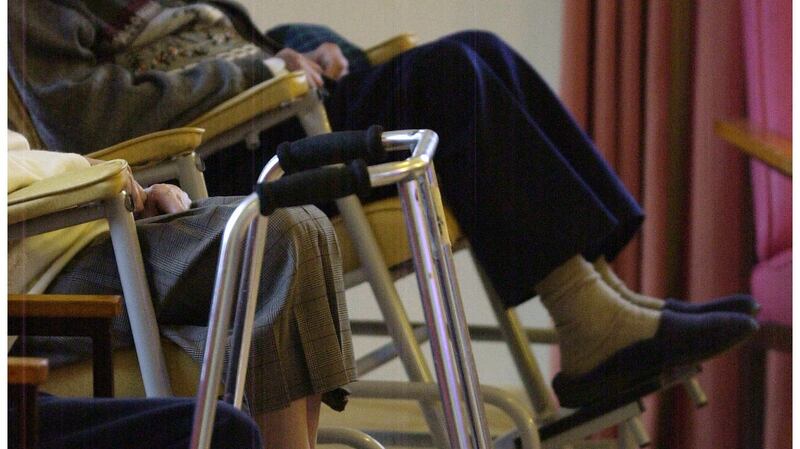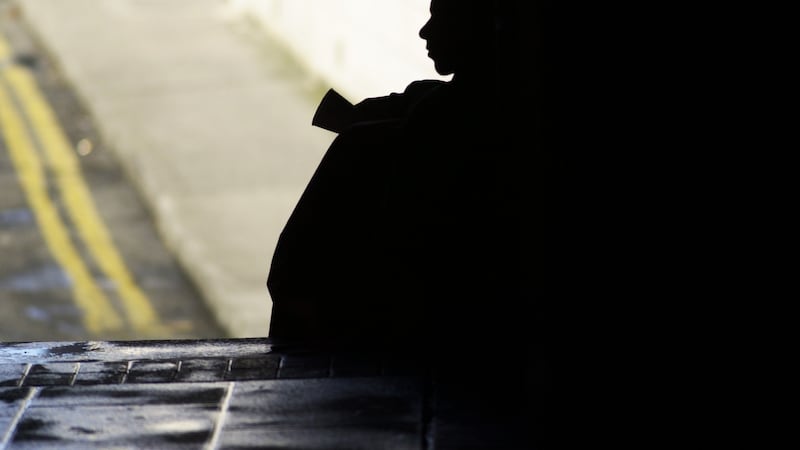If the next government – to be elected on February 8th – serves its full term, it will still be in office in 2025. What voters have to consider, therefore, are not the small inducements they will be offered by the main parties. We should be thinking, rather, about the formidable challenges Ireland will certainly face in the next five years. There will be unpredictable events and unforeseeable crises. But here are 10 big questions that anyone aspiring to government should be able to answer.

1 How are you going to decarbonise the economy and society?
Ireland is the second worst performer in the European Union on reducing carbon emissions – after the big coal producer Poland. This actually represents progress – Ireland used to be the very worst.
There is now an ambitious Climate Action Plan on paper. But will it be implemented with the necessary courage and urgency? The Climate Change Performance Index (CCPI) notes a “significant lack of progress in decarbonising key parts of the economy, mainly in agriculture, road transport and the residential sector” and that “renewable support schemes are insufficient and also slow to progress”.
The CCPI report says that “near-term ambition needs to be ratcheted up quickly by specifying deep cuts in fossil fuel and reactive nitrogen usage to put Ireland on a net zero emissions pathway aligned with the Paris temperature goals.”
It does not seem encouraging that one of the pieces of legislation that was allowed to lapse when the Taoiseach called the election this week is the Climate Action Bill, the key to making green rhetoric real.
This is not just an environmental imperative – it is also an economic necessity. Ireland is in danger of losing out on the next wave of economic innovation. The Government’s Enterprise 2025 plan for business development has virtually nothing to say about the creation of a green economy and how it might be achieved.
2 How are you going to solve the housing crisis?
Housing, along with the wider questions of land use and spatial planning, is at the heart of Ireland’s social and economic problems. Since early 2013, residential property prices and average rents have increased dramatically, locking many people out of home ownership and sucking up their incomes.
There is a need for 30,000 new homes a year – 150,000 over the potential lifetime of the next government. But there is also a need for those homes to be both affordable and sustainable, which is to say built in places from which the residents do not have to drive to work.
At the sharpest end, the failure of housing policy has led to the previously unthinkable figures of over 10,000 homeless people, including more than 3,500 children, becoming the new normal. Less lurid but no less significant is the fact that almost one in five households now lives in a privately rented home compared to one in 10 a decade ago – putting unsustainable pressure on a dysfunctional private rental market.
A key failure is the decision to cut spending on social housing by 72 per cent between 2008 and 2012 (from €1.38 billion to €390 million). Meanwhile, the State is projected to spend at least €3.5 billion on rent subsidies to private landlords over the next five years. Without a radical commitment to a huge public housing programme, this staggering misuse of public resources will continue.

3 When will we get a one-tier public health system?
In 2017 (the latest year for which overall figures are available), Irish people spent, through their taxes, insurance premiums and out-of-pocket payments, €21.1 billion on healthcare, an increase of 13 per cent since 2012. On these trends, spending will be well over €25 billion by 2025. That is surely more than enough to give everyone access to decent and timely care: health spending per capita in Ireland is higher than countries that somehow manage to do this.
Yet Ireland has too few doctors (both GPs and consultants), too much hospital care provided by poorly qualified doctors, nightmarish emergency departments and some of the worst waiting lists in the developed world: well over half a million people – more than 10 per cent of Ireland’s population – are waiting for an outpatient appointment at any given time.
This includes 215,000 children, many of them with conditions for which early intervention is crucial. Eight times as many patients are waiting over a year for treatment as in England.
And social status is a key factor: in north Dublin, for example, there are 1,469 children on waiting lists for follow-up speech and language therapy compared with zero for southeast Dublin and 10 for Dún Laoghaire. At the heart of the problem is a wildly inefficient and unjust system in which access to treatment is often driven, not by need, but by ability to pay.
There is a cross-party plan, Sláintecare, which is supposed to deliver a transformed “world-class” single-tier public health service by 2028 – so one would expect the bulk of it to be accomplished by 2025. What needs to be spelled out, however, is the cost of implementing it and a precise timeline for doing so.
4 How would Ireland cope with the loss of its corporation tax bonanza?
Ireland’s low corporation tax regime has become a great cash cow: corporation tax receipts were €1.4 billion ahead of expectations last year – €10.9 billion in total and more than double what they were five years ago.
But according to the Fiscal Advisory Council, up to €6 billion of this tax take is "excess", meaning it cannot be counted on in the future. It is hugely dependent on a very small number of multinational companies: the top 10 payers account for about half of the receipts.
And international attitudes to Ireland’s facilitation of corporate tax avoidance are hardening. The Department of Finance’s chief economist has warned that much of this windfall “can be moved offshore at the stroke of a pen”. So what’s the plan for a big drop in corporation tax? What would a sustainable Irish tax base look like?
5 How do we diversify the economy?
The corporation tax problem is a symptom of a wider difficulty: the narrowness of the Irish export economy. Ireland has made itself a very successful exporter: between 1975 and 2018 the value of goods exported rose from €1,838 million to €140,808 million. That’s great. But in 2017, pharmaceuticals and chemicals accounted for almost 60 per cent of goods exports, while computer services accounted for 43 per of Ireland’s services exports.
This concentration is compounded by the fact that Ireland’s goods exports are typically destined for a small number of key markets, with more than a quarter going to the US and 11 per cent going to the UK. None of this is going to change overnight. But Brexit and Donald Trump remind us that we are not in a world where established patterns of trade can be taken for granted.
A huge question for Ireland is how the export economy can become both deeper (a bigger range of goods and services) and wider (selling to more markets). That has to involve much more radical innovation in the indigenous sector, including the small and medium companies that account for 99.8 per cent of all Irish enterprises and 68.4 per cent of Irish jobs.
6 What will happen to people who lose their jobs to automation?
In 2018, the Expert Group on Future Skills Needs noted that one in three jobs in Ireland is highly jeopardised by the adoption of digital technologies in the coming years. It noted that the potential impact of automation will be worst for those with the lower levels of educational attainment.
The sectors most at risk are associated with manual tasks that can be replaced by automation: agriculture, retail, transport, hospitality and manufacturing. This makes it crucial that these workers are able to upskill.
Eurostat survey data show that 13 per cent of people in the workforce in Ireland are engaged in some kind of learning activity. This is slightly better than the EU average but lags far behind the European leaders. In Switzerland, nearly a third (32 per cent) of all workers indicated that they had undertaken a learning activity in the previous month, and in Sweden the corresponding figure was 29 per cent. How are we going to become a culture of lifelong learning?
7 How do we fund third-level education?
A closely related question is the slow crisis in higher education. This is important because it relates to the great success story of modern Ireland: the creation of one of the most educated workforces in the world. In 2018, just under half (47 per cent) of the working age population in Ireland had a third-level education, the highest proportion in the EU, where the average is just over a third.
But the system is under immense strain. University rankings are highly problematic, but in the Times Higher Education World University Rankings 2020, only one Irish university (Trinity College Dublin) ranks in the top 200 global universities, whereas in 2011, both TCD and UCD were ranked in the top 100. The amount spent on education per higher level student in Ireland (€13,237) is below the OECD average (€15,555).
Governments have largely avoided making decisions about this – five more years of indecision is not an option.

8 How do we deal with an ageing society?
We are used to Ireland being an usually young country – not least because so many of the older generation emigrated. This will change dramatically: the number of people aged 65 years and over is projected to increase by more than 65 per cent across the State by 2036. By 2025 we will be well into a process whereby the number of people aged 80 and over is projected to rise by well over 250 per cent over 30 years.
This is a very positive change but we are poorly prepared for it. For example, more than 40 per cent of all workers aged between 20 and 69 have no pension coverage other than the State pension. The implications for healthcare, housing, transport, the economy and social life are profound – but there is little in the way of a coherent long-term strategy for dealing with them.

9 How do we end child poverty?
As it happens, the Government published on Tuesday, just hours before the election was called, a strategy for social inclusion up to 2025. It does not seem inapt that it got lost in the electoral noise. Ireland is ranked 15th in the EU in relation to reducing the risk of poverty or social exclusion.
The strategy document sets out the aim of moving into the top five EU countries – and says that this “target is clearly ambitious and will be difficult to achieve”. If things go on as they have been, this is an understatement. The target for 2025 is to lift 70,000 children out of poverty. This would still leave 37,000 children in poverty.
But in any case, it is exactly the same target that has been in place between 2011 and 2020. We were supposed to have reached that 37,000 figure this year – the actual figure is 92,000. Ireland is ranked 20th among EU countries in dealing with child poverty. That is not going to improve substantially unless the issue is made a priority for the next government.
10 Will we end the neglect of culture?
There has been a belated official recognition over the past few years that Ireland’s “soft power” in the world is crucially dependent on its reputation as a centre for cultural innovation. The official Culture 2025 document sets out the ambition to double the amount of public funding for arts and culture from 2017 levels by 2025, but with no detailed timetable this could not reasonably be called a plan.
There is also a document called Investing in our Culture, Language and Heritage 2018-2027, a 10-year plan setting out a commitment to capital investment of €1.2 billion in Ireland’s culture, language and heritage.
The reality remains one of gross underfunding by international standards. Even the National Archives could not this year display the records released by Government departments because it doesn’t have the space. Will there be space for the next government’s stellar records of achievement in 30 years?













